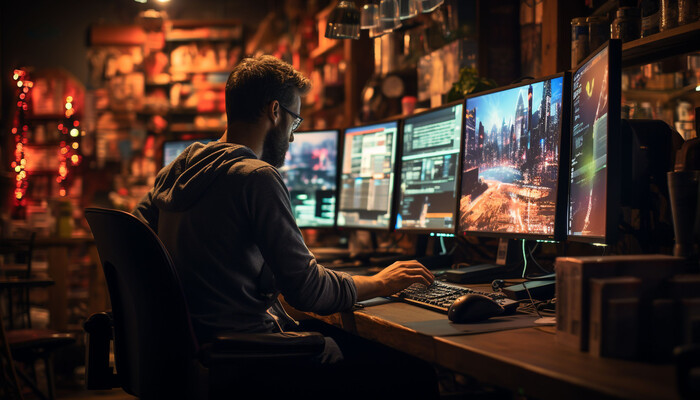
3d Artist
Industry Need For 3D Artist
Why industry need for 3d artist?
3D artists are in demand across various industries due to the versatile skills they possess in creating three-dimensional visual content. Here are some industries that commonly require the services of 3D artists:
1. Entertainment and Media:
• Gaming: The gaming industry heavily relies on 3D artists for creating characters, environments, and assets. This includes concept art, modeling, texturing, animation, and more.
- • Animation and Film: 3D artists contribute to the creation of visual effects, CGI characters, and animated sequences in movies, TV shows, and advertisements.
- 2. Architecture and Real Estate:
- • Architectural Visualization: 3D artists create realistic renderings and visualizations of architectural designs for presentations, marketing materials, and client approvals.
- • Virtual Tours: Real estate companies use 3D artists to develop virtual tours and interactive experiences for showcasing properties.
- 3. Product Design and Manufacturing:
- • Industrial Design: 3D artists contribute to the design and visualization of products, helping engineers and manufacturers in the product development process.
- • Prototyping: Creating 3D models for prototypes is common in industries ranging from consumer goods to automotive.
- 4. Advertising and Marketing:
- • Visual Campaigns: 3D artists create eye-catching visuals for advertising campaigns, including product shots, promotional materials, and interactive content.
- • Virtual and Augmented Reality: Industries are increasingly using VR and AR for marketing, and 3D artists play a key role in creating immersive experiences.
- 5. Medical and Scientific Visualization:
- • Medical Illustration: 3D artists produce detailed anatomical and medical illustrations for educational materials, research, and patient understanding.
- • Scientific Simulation: Visualization of scientific data and simulations often involves the expertise of 3D artists.
- 6. Education and Training:
- • E-learning: 3D artists contribute to educational content creation, developing interactive 3D models for online courses and educational platforms.
- • Simulations: Training simulations, particularly in fields like aviation or healthcare, often require 3D modeling and animation.
- 7. Web and Interactive Design:
- • Web Design: 3D elements are increasingly used in web design to create
visually engaging and interactive websites.


0 comments